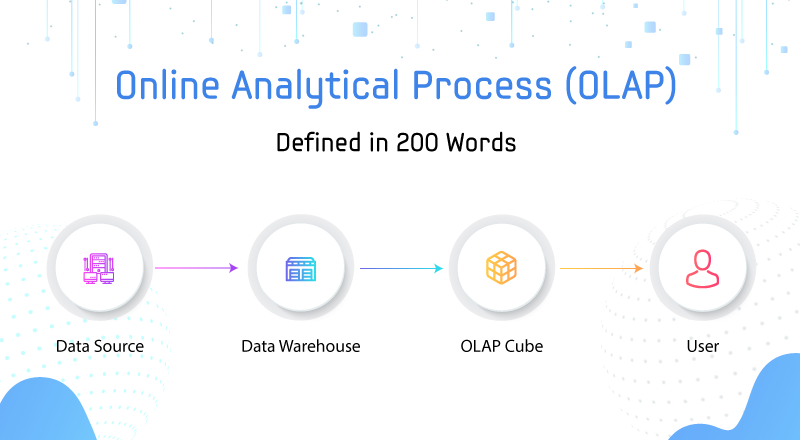

OLAP is an important arm of Business Intelligence, with relational databases, report writing and data mining, under its umbrella.
The terminology OLAP was created as a little alteration to the traditional term ‘Online transaction processing (OLTP)’.
OLAP encompasses competencies like unlimited report viewing, complicated analytical calculations and budget / predictive planning.
It’s a data processing method providing multi-dimensional view of the measures and enables user easy and speedy access of consolidated enterprise data.
OLAP cube consists of numeric facts called measures which are categorized by dimensions. The cube metadata may be created from a star schema or snowflake schema of tables in a relational database.

OLAP works as a fundamental stone to many types of business apps pertaining to
Features
Major Advantages
Key OLAP Technologies
Pentaho BI, Mondrian, Apache Druid, Click House, Pinot, Apache Kylin, etc.
SPEC INDIA is your trusted partner for AI-driven software solutions, with proven expertise in digital transformation and innovative technology services. We deliver secure, reliable, and high-quality IT solutions to clients worldwide. As an ISO/IEC 27001:2022 certified company, we follow the highest standards for data security and quality. Our team applies proven project management methods, flexible engagement models, and modern infrastructure to deliver outstanding results. With skilled professionals and years of experience, we turn ideas into impactful solutions that drive business growth.
SPEC House, Parth Complex, Near Swastik Cross Roads, Navarangpura, Ahmedabad 380009, INDIA.
This website uses cookies to ensure you get the best experience on our website. Read Spec India’s Privacy Policy